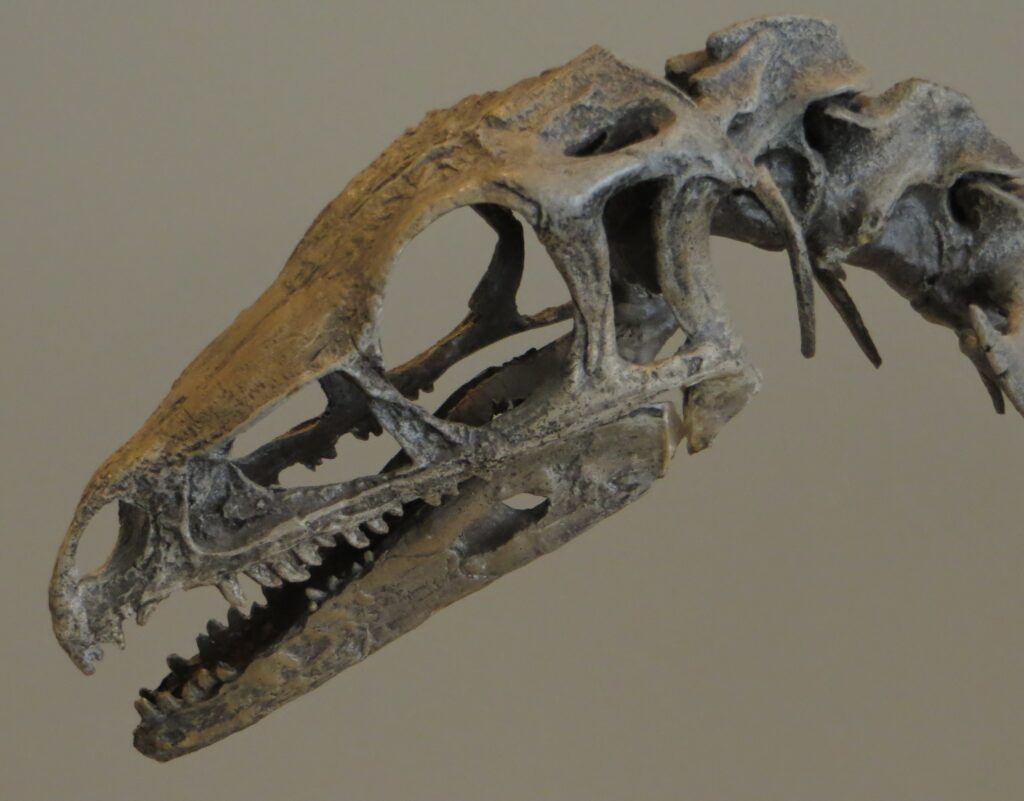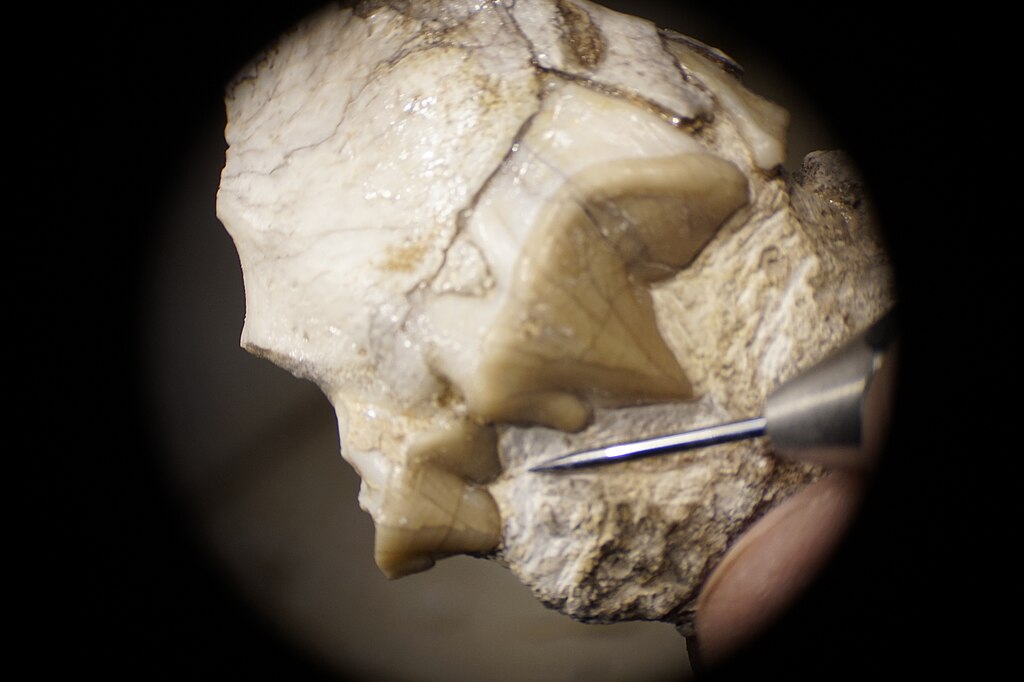From the groundbreaking special effects of the 1920s to today’s photorealistic computer-generated imagery, dinosaurs have captivated movie audiences for generations. These prehistoric creatures have stomped, roared, and chomped their way through cinema history, creating unforgettable moments that continue to influence both filmmaking and our cultural understanding of dinosaurs. Despite being extinct for 65 million years, dinosaurs remain very much alive on the silver screen, where filmmakers have used advancing technology to bring increasingly believable prehistoric worlds to life. This article explores the most memorable and influential dinosaur scenes in film history, moments that have shaped our collective imagination and left permanent footprints in cinema.
The Birth of Cinematic Dinosaurs: The Lost World (1925)

Long before computer-generated imagery, pioneering filmmaker Willis O’Brien created the first significant dinosaur scenes for the silent film “The Lost World.” Using meticulous stop-motion animation, O’Brien brought to life a brontosaurus rampaging through London streets—a scene that left 1925 audiences astonished and terrified. The painstaking process required photographing small dinosaur models one frame at a time, making minute adjustments between shots to create the illusion of movement. This groundbreaking technical achievement established dinosaurs as cinematic spectacles and set the foundation for all prehistoric creature features that would follow. The film’s success proved dinosaurs could be marketable movie monsters, creating a template that Hollywood would revisit repeatedly throughout the century.
King Kong’s Prehistoric Battle (1933)
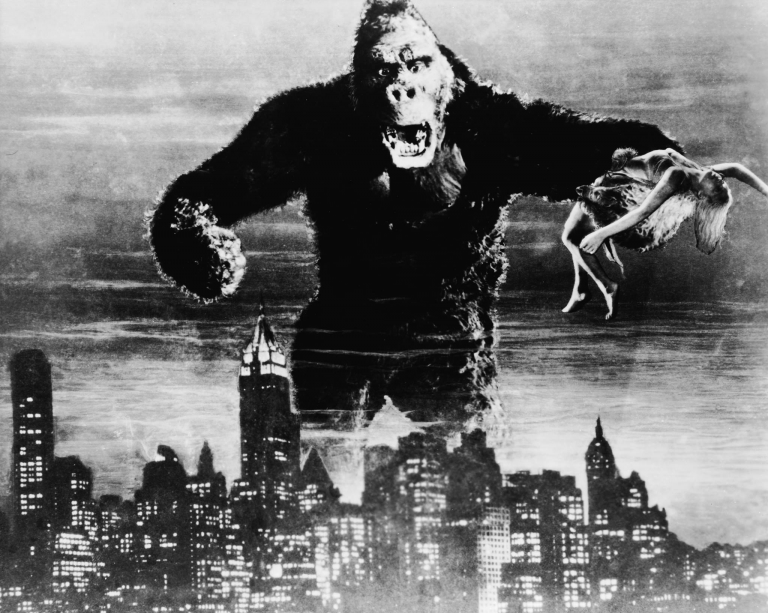
Willis O’Brien refined his stop-motion techniques for 1933’s “King Kong,” creating one of cinema’s most influential dinosaur sequences. The scene where Kong battles a Tyrannosaurus rex while protecting Ann Darrow established a template for dinosaur fight sequences that filmmakers still reference today. O’Brien’s animation brought unprecedented personality and movement to both creatures, making their battle feel genuine despite the technical limitations of the era. The sequence combined dramatic music, creative camera angles, and revolutionary special effects to create genuine tension and excitement. This iconic battle scene would be reimagined in Peter Jackson’s 2005 remake, demonstrating its lasting impact on dinosaur depictions in cinema nearly a century later.
Ray Harryhausen’s Valley of Gwangi (1969)
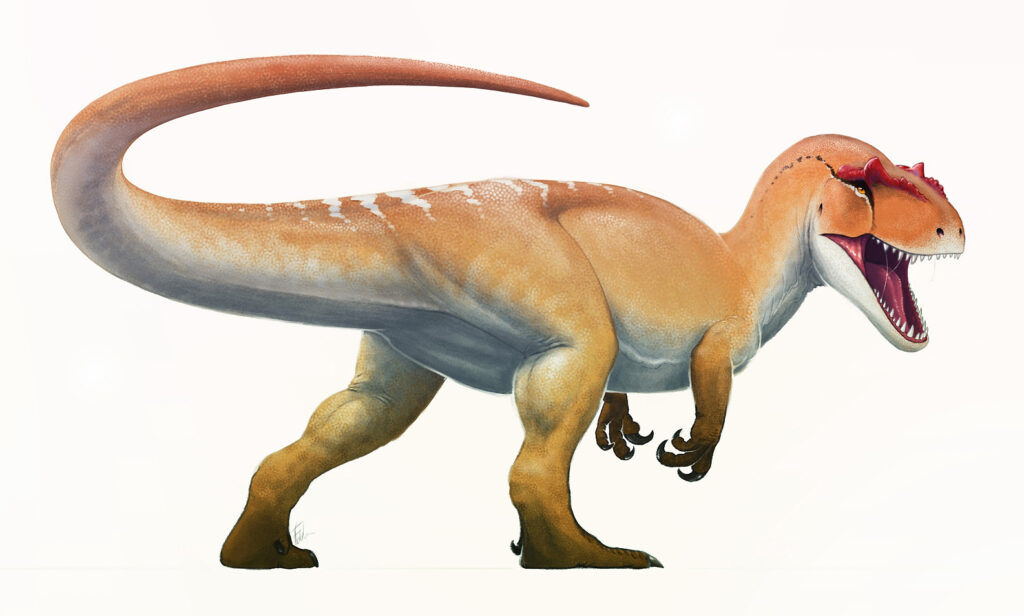
Stop-motion master Ray Harryhausen, who studied under Willis O’Brien, created what many consider the pinnacle of dinosaur animation in “The Valley of Gwangi.” The film’s standout sequence features cowboys attempting to lasso an Allosaurus (called Gwangi), seamlessly blending live actors with stop-motion dinosaurs in broad daylight—a technical feat considered impossible by many filmmakers of the era. Harryhausen’s attention to anatomical detail and fluid movement gave Gwangi a presence and personality that transcended its status as a special effect. This scene represents the pinnacle of pre-digital dinosaur effects, with techniques that pushed the boundaries of what was possible without computers. Modern filmmakers like Steven Spielberg have acknowledged Harryhausen’s profound influence on later dinosaur films, including “Jurassic Park.”
Jurassic Park’s T. Rex Breakout (1993)
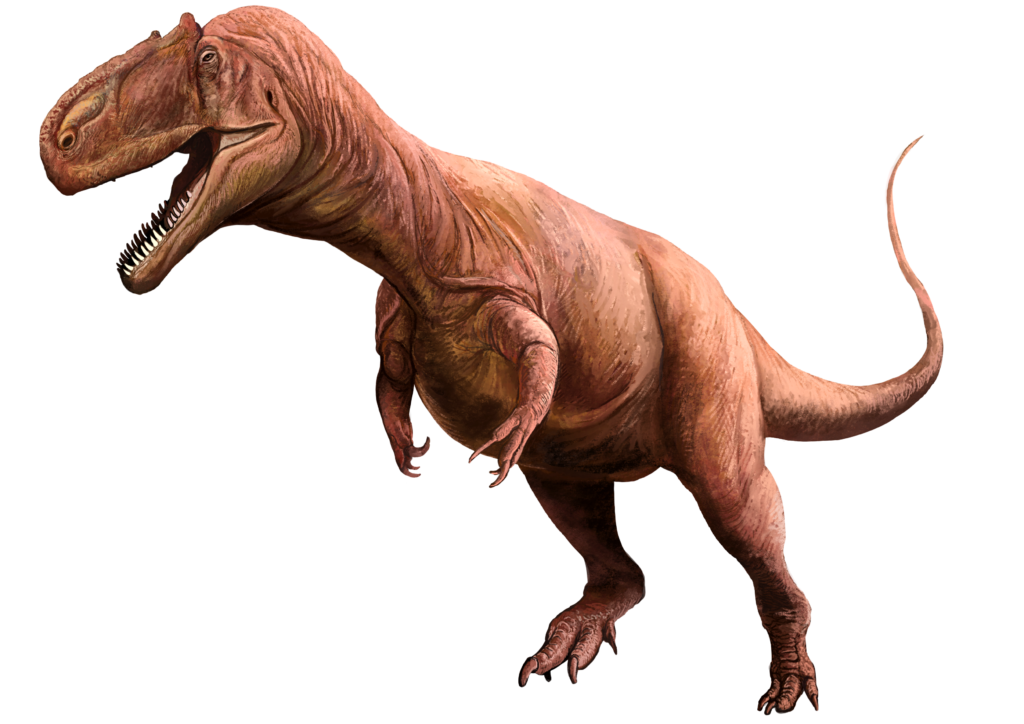
Steven Spielberg’s “Jurassic Park” revolutionized dinosaur depictions with its terrifying T. rex paddock breakout scene, which masterfully combined practical animatronics with early CGI to create what many consider the most influential dinosaur scene in cinema history. The sequence builds unbearable tension as the T. rex first announces its presence by rippling water in cups, followed by the failure of the electric fences that were meant to contain it. Stan Winston’s life-sized animatronic T. rex, standing over 20 feet tall, provided physical presence while groundbreaking CGI allowed for full-body movement shots that were previously impossible. The scene’s impact came not just from its technical achievements but from Spielberg’s expert direction, using rain, darkness, and children in peril to maximize the emotional impact. Nearly thirty years later, this sequence remains the standard against which all movie dinosaur reveals are measured.
The Kitchen Hunters in Jurassic Park (1993)
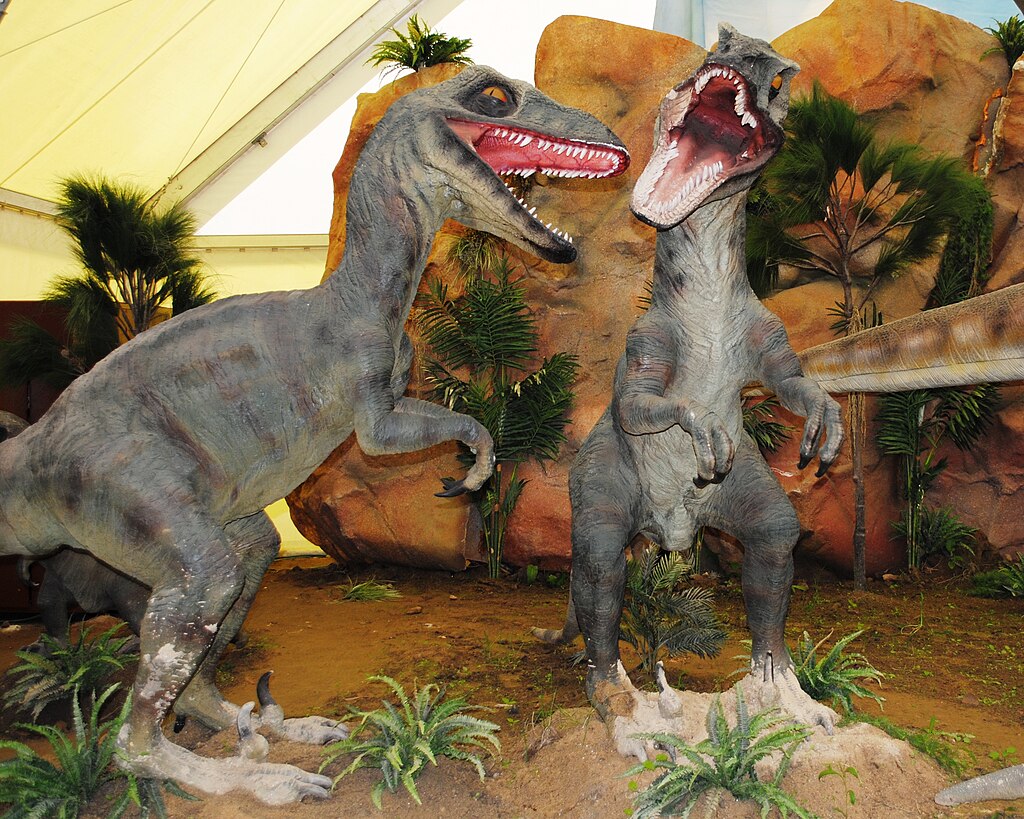
While the T. rex breakout gets much of the attention, “Jurassic Park’s” kitchen scene with two Velociraptors hunting the Hammond grandchildren created a different kind of dinosaur terror through psychological suspense. Spielberg transformed these relatively small dinosaurs into cinema’s perfect predators—intelligent, coordinated, and relentlessly determined. The scene plays out like a horror movie, with children Lex and Tim desperately hiding as the raptors demonstrate problem-solving abilities, including opening doors and using reflections to locate prey. The confined space of the industrial kitchen, with its reflective surfaces and narrow hiding spots, amplifies the tension through claustrophobic framing and sound design. This scene permanently altered the public perception of Velociraptors, transforming them from obscure dinosaurs to cultural icons of calculated predatory intelligence.
The Lost World: Jurassic Park’s Dual T. Rex Attack (1997)

Spielberg upped the ante in the 1997 sequel “The Lost World: Jurassic Park” with a heart-stopping sequence featuring two adult Tyrannosaurus rexes attacking a research trailer perched precariously on a cliff edge. This scene showcases cinema’s first T. rex couple working in coordinated tandem, pushing the trailer gradually toward the cliff while the trapped researchers slide helplessly toward their doom. The sequence masterfully builds tension through multiple escalating threats: the initial T. rex attack, the addition of a second predator, the cliff drop, and finally the trailer’s glass floor beginning to crack as characters dangle above the abyss. The scene’s practical effects, including full-sized mechanical T. rex heads interacting with the set, combined with improved CGI created a new benchmark for dinosaur action sequences. Spielberg’s direction makes brilliant use of spatial dynamics, constantly changing the orientation of the trailer to disorient both characters and audience.
Jurassic World’s Indominus Rex Reveal (2015)
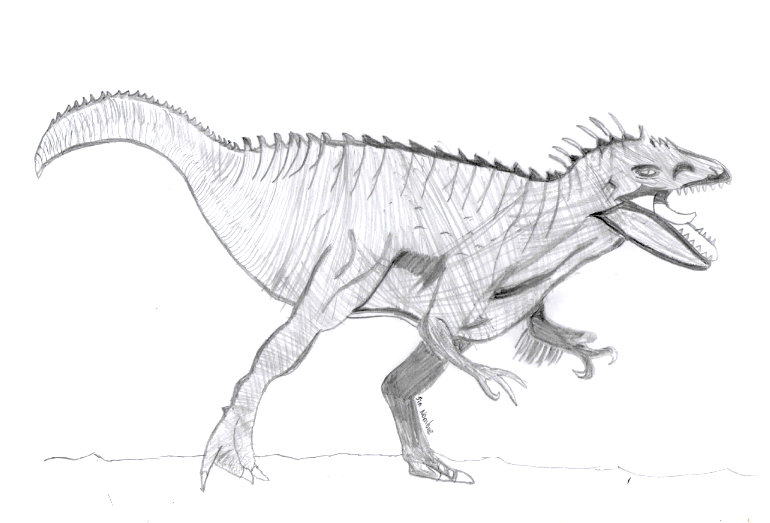
After a 14-year franchise hiatus, “Jurassic World” introduced cinema’s first major hybrid dinosaur with the Indominus rex, a genetically engineered super-predator whose reveal scene demonstrated how far dinosaur visual effects had evolved. Director Colin Trevorrow built the scene around the creature’s most terrifying trait: adaptive camouflage that allows it to blend into its environment before striking. The sequence begins with park workers realizing the dinosaur appears missing from its paddock, only to discover it has been present all along, concealed against a wall and waiting for the perfect moment to strike. The scene effectively toys with audience expectations by allowing viewers to experience the same shocking realization as the characters. Unlike earlier films that used technical limitations to hide their dinosaurs, this scene demonstrates confidence in modern CGI’s ability to present a fully-visible and convincing dinosaur predator in broad daylight.
Walking with Dinosaurs: The Ballad of Big Al (2000)
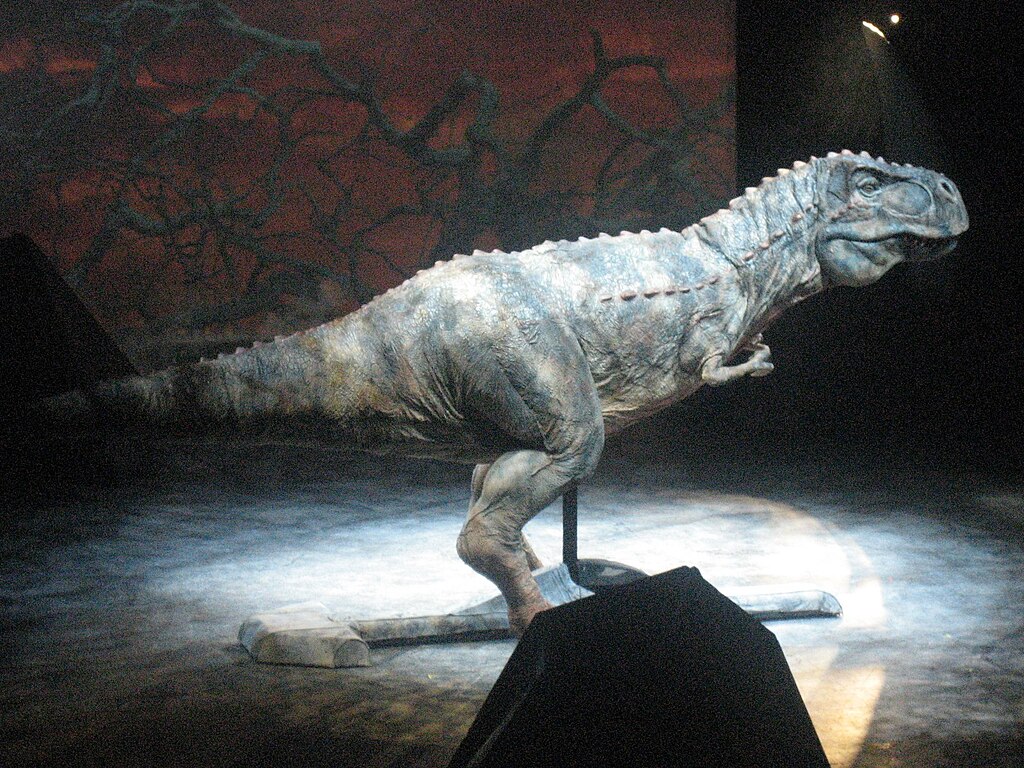
Though technically a television documentary rather than a traditional film, BBC’s “Walking with Dinosaurs: The Ballad of Big Al” deserves recognition for creating one of the most scientifically accurate and emotionally resonant dinosaur sequences ever produced. The death scene of the Allosaurus protagonist “Big Al” represented a watershed moment in depicting dinosaurs as real animals rather than movie monsters. Using evidence from an actual Allosaurus fossil nicknamed “Big Al,” the production team recreated how this predator likely died from infected wounds and starvation. The scene’s power comes from its unflinching naturalism, showing the once-mighty predator growing weaker until it can no longer hunt, finally collapsing beside a dried riverbed. Groundbreaking for its time, the sequence employed early 2000s CGI to create the first documentary-style life cycle of a specific dinosaur individual based on fossil evidence, influencing countless documentaries and films that followed.
Dinosaur Stampede in Jurassic World: Fallen Kingdom (2018)

Director J.A. Bayona created one of cinema’s most emotionally complex dinosaur scenes in “Jurassic World: Fallen Kingdom” with the volcanic eruption and dinosaur stampede sequence. The scene forces viewers to confront the moral dilemma at the heart of the franchise: whether these recreated dinosaurs deserve protection as living creatures or should be allowed to go extinct again. As Mount Sibo erupts, dozens of dinosaur species flee together alongside human characters, creating a visual spectacle of prehistoric creatures silhouetted against fiery volcanic backdrops. The image of a Brachiosaurus left behind on the dock, raising its neck one final time as it’s engulfed by ash clouds, became one of the franchise’s most poignant moments. This scene’s emotional impact comes from its reversal of expectations—instead of running from dangerous dinosaurs, characters and audience alike find themselves empathizing with the creatures’ suffering and facing the ethical questions surrounding their existence.
Dinosaurs Across America in Jurassic World Dominion (2022)
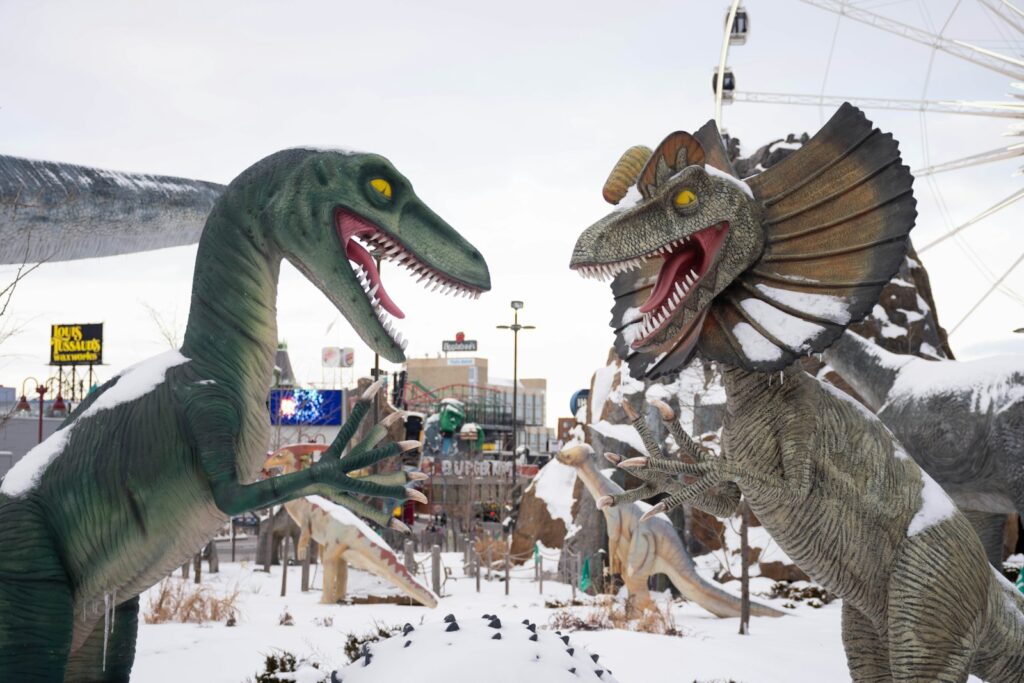
The “Jurassic World Dominion” sequence showing dinosaurs integrated into modern environments across America represents cinema’s most expansive vision of dinosaurs coexisting with contemporary human society. Director Colin Trevorrow presents a montage of scenarios worldwide: Apatosaurus herding alongside elephants in Africa, Pteranodons nesting on skyscrapers, and poachers capturing Parasaurolophus in the snow. Unlike previous films in the franchise where dinosaurs remained contained on islands or limited locations, this sequence imagines a transformed Earth where prehistoric creatures have established themselves in diverse ecosystems. The scene’s power comes from showing how quickly humans have normalized the presence of dinosaurs, with news reports of dinosaur incidents becoming as routine as traffic updates. This sequence expands the visual language of dinosaur cinema by placing the creatures in completely new contexts—construction sites, fishing boats, suburban neighborhoods—creating fresh visual juxtapositions never before seen in dinosaur films.
The Gentle Giants of The Land Before Time (1988)
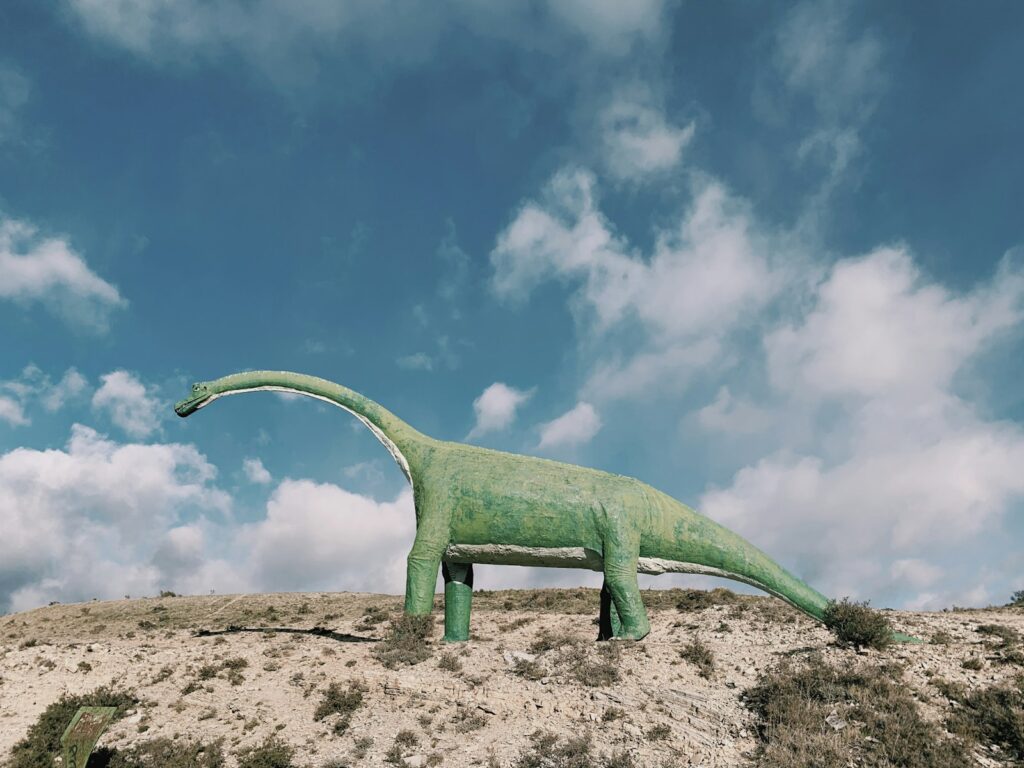
Don Bluth’s animated classic “The Land Before Time” created one of cinema’s most emotionally devastating dinosaur scenes with the death of Littlefoot’s mother. After protecting her son from a Sharptooth (Tyrannosaurus) attack, the mortally wounded Apatosaurus delivers a final, tender goodbye before succumbing to her injuries during a dramatic rainstorm. This scene broke new ground in dinosaur cinema by treating the creatures with the emotional depth previously reserved for human or mammalian characters in family films. The sequence’s power comes from its unflinching portrayal of grief, as young Littlefoot denies his mother’s death and follows a phantom image of her before finally accepting the truth. Though animated rather than realistic, this scene influenced how subsequent filmmakers approached dinosaur characterization, proving that prehistoric creatures could carry significant emotional weight beyond mere spectacle.
The Brontosaurus Stampede in King Kong (2005)
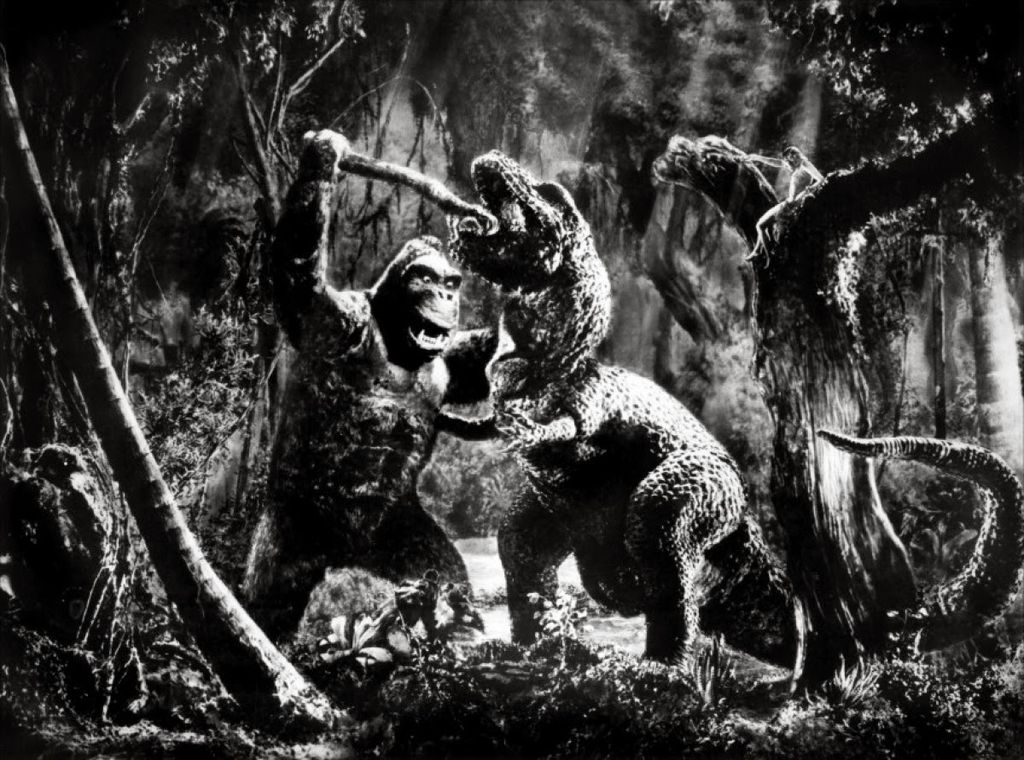
Peter Jackson’s remake of “King Kong” features an extraordinary sequence where the film crew finds themselves caught in a stampede of Brontosaurus fleeing from Vastatosaurus rex predators (Jackson’s updated version of Tyrannosaurus). This technically complex scene represents the evolution of the dinosaur stampede concept, with dozens of massive sauropods charging through a narrow jungle canyon while human characters attempt to survive underfoot. The scene’s brilliance lies in its constantly escalating danger, with the initial threat of being trampled by herbivores giving way to the realization that carnivores are pursuing both humans and Brontosaurus. Jackson’s innovative camera work places viewers directly in the chaos, with point-of-view shots from between dinosaur legs and quick cuts that enhance the disorientation. This sequence demonstrated how modern CGI could finally realize the full potential of large-scale dinosaur action that earlier filmmakers could only suggest through limited glimpses.
Dinosaur Migration in Ice Age: Dawn of the Dinosaurs (2009)
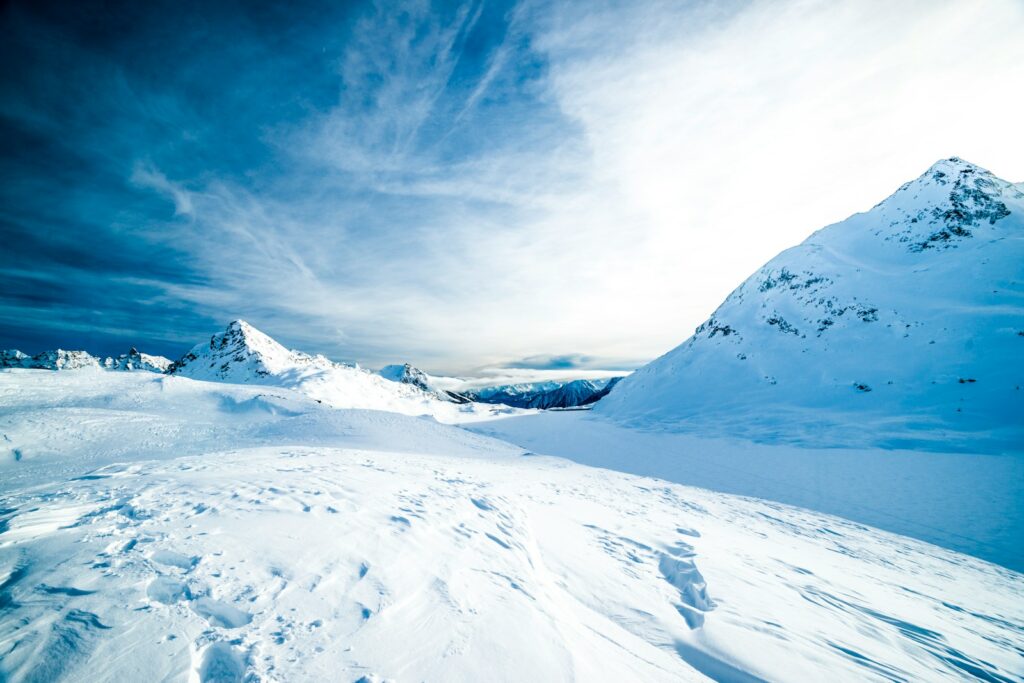
Though scientifically inaccurate in placing dinosaurs in an ice age setting, Blue Sky Studios created a visually stunning dinosaur migration sequence that stands as one of animation’s most beautiful prehistoric scenes. This sequence reveals a hidden tropical world beneath the ice where dinosaurs have continued to thrive, with massive herds of diverse species traveling together toward breeding grounds. The scene’s power comes from its scale and color palette, with hundreds of vibrantly colored dinosaurs moving across lush prehistoric landscapes rendered in spectacular detail. Unlike most dinosaur films focused on fear or threat, this sequence emphasizes the majestic and awe-inspiring qualities of these creatures, showing them as part of a balanced ecosystem rather than as monsters. The aerial views of the massive migration, accompanied by John Powell’s soaring orchestral score, created a sense of prehistoric spectacle rarely captured in either animated or live-action dinosaur films.
The Spinosaurus vs. T. Rex Battle in Jurassic Park III (2001)
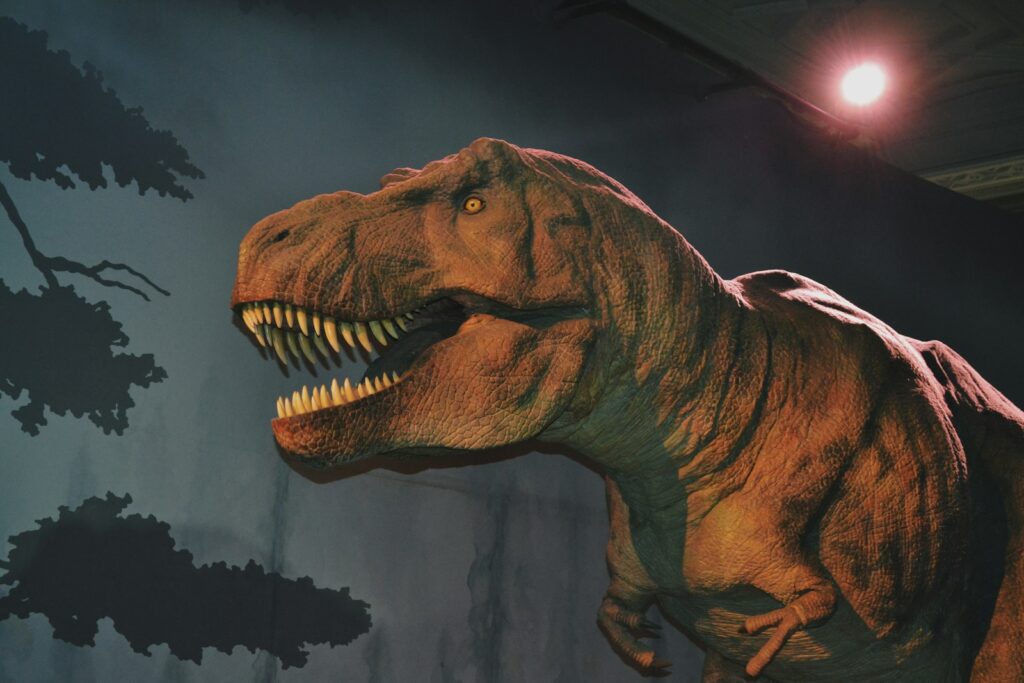
Though criticized for its story, “Jurassic Park III” created a controversial but undeniably memorable dinosaur scene by dethroning the franchise’s iconic Tyrannosaurus rex. In this shocking sequence, the newly introduced Spinosaurus confronts and quickly kills a T. rex that audiences had been conditioned to view as the apex predator of the dinosaur world. Director Joe Johnston deliberately subverted audience expectations by having the longer, more crocodilian Spinosaurus snap the T. rex’s neck in a brief but brutal skirmish, establishing a new threat level for the film. The scene sparked intense debate among fans and paleontologists alike about which dinosaur would realistically win such an encounter, demonstrating the passionate investment audiences had developed in these prehistoric creatures. This cinematically bold choice expanded the visual language of dinosaur battles by featuring two massive theropods with distinctly different body types and fighting styles, moving beyond the standardized dinosaur conflicts seen in previous films.
The evolution of dinosaur scenes in cinema mirrors the advancement of both filmmaking technology and paleontological knowledge. From Willis O’Brien’s pioneering stop-motion work to today’s seamless digital creations, these prehistoric creatures have consistently pushed the boundaries of what’s possible in visual storytelling. The most iconic dinosaur scenes don’t merely showcase technical achievements—they tap into our primal fascination with these extinct giants, creating moments of terror, wonder, and even empathy. As filmmaking technology continues to evolve, dinosaurs will undoubtedly continue their reign as cinema’s most enduring prehistoric stars, connecting modern audiences with creatures that vanished from Earth millions of years before the first camera ever rolled.

